Football/Soccer Session (Academy Sessions): Defending in Midfield Areas

Profile Summary

| Name: | Neil Moore |
|---|---|
| City: | Bristol |
| Country: | United Kingdom |
| Membership: | Adult Member |
| Sport: | Football/Soccer |
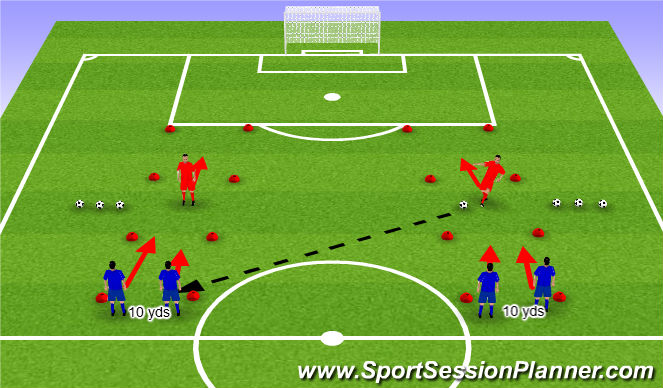
See the guidance at the top of this page to understand why you are not seeing interactive Football/Soccer images.

Individual Defending (20 mins)
Details
Body position and footwork enable speedy recovery and movement if ball is passed between 2 A's
Judgement of when to reduce distance between lone D and A in possession
Art of making a 2 v 1 situation into a 1 v 1 and take the initiative in this circumstance
Coaching Points
D initially splits the 2 A's
Recovery towards goal in a controlled manner, giving ground only at speed of the attack.
Decision as to when to confront a in possession of ball.
How to confront player in possesssion and deny passes to 2nd A
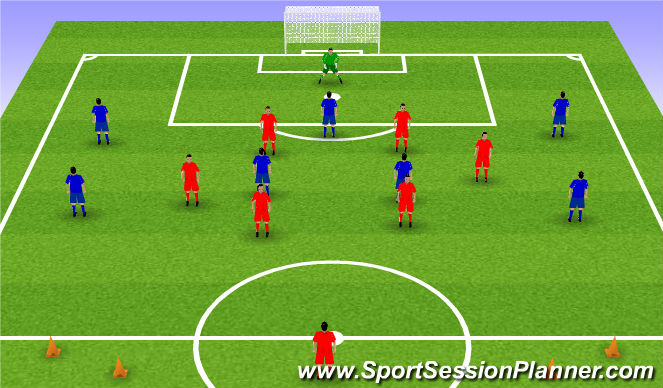
See the guidance at the top of this page to understand why you are not seeing interactive Football/Soccer images.

Phase
Organisation
Phase of play (8 attackers v 6 defenders).
Attacking team (A’s) play in a 3-4 formation plus the GK.
Defenders play in a 1-3-2 formation so that they are outnumbered in midfield. If the defending team win the ball back, they have only 5 touches as a team before they must shoot etc.
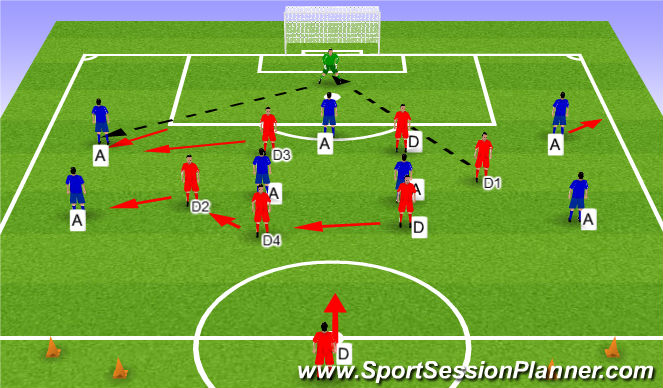
See the guidance at the top of this page to understand why you are not seeing interactive Football/Soccer images.

Phase
START POSITION 1- Midfielder D1 plays a misplaced through ball which goes through to the GK (see diagram 1). The GK can then start play, e.g. by throwing the ball out to the full back. Midfielders then apply pressure.
ALTERNATIVE START POSIITON- GK throws ball out straight to one of his own midfielders allowing the defensive midfield team to apply pressure straight away and win the ball back. Attacking team attempt to score through mini goals to score points.
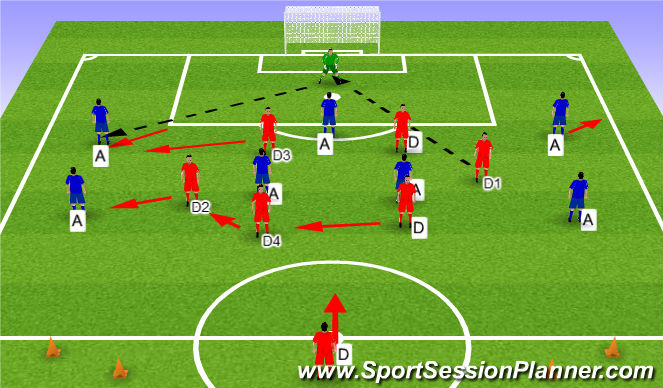
See the guidance at the top of this page to understand why you are not seeing interactive Football/Soccer images.

Phase (30 mins)
Key Factors
• Pressure from the front- close down quickly (show inside/ outside)
• Nearest player to the ball, other players add defensive support, e.g. D2, D3 and D4 in diagram
• Prevent attacking players from tuning / passing. • Compactness- make play predictable
• Can I intercept the ball? Attempt to press the ball early. If not, can I drop?
• Stay on your feet- technique of tackling, patience and timing.
• Communication- work as a team
• Concentration and energy- need the correct focus not to make mistakes.
• Use of the ball- once it has been won back, can we use it to make an end product, e.g. a shot on goal?
• Positive aggression, e.g. to win headers and be first to the ball.








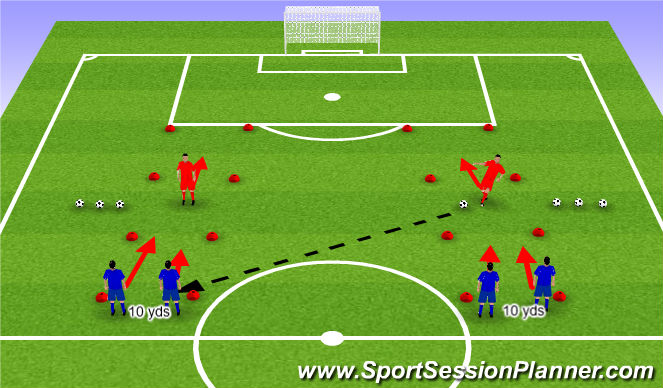
 Play animation
Play animation Play step-by-step
Play step-by-step Repeat (toggle)
Repeat (toggle) Full Screen
Full Screen Pause
Pause Stop
Stop
Individual Defending
Organisation
Half Pitch with 2 x 10 yard channels marked with cones and a goal at one end.
Players work in 3's with 2 attackers and 1 defenderin each channel
Practice starts with a D passing diagnally to one of the 2 A's who then proceed to attack 2 v 1 in channel to cross the 18 yard line and shoot at goal.
Once pass released : D's react to flight of ball and adjust accordingly.
If D's gains possession ball is played back to start (next D's begin practice)